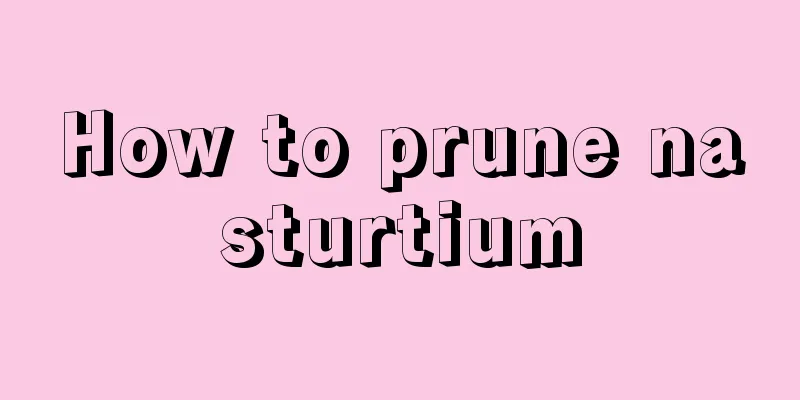How to prune nasturtium

Pruning timeSeedling stage: Nasturtium grows fast and has a strong apical growth advantage. If you want it to have lush flowers and leaves, you must top it when it is a seedling to make it grow side branches. Mature plant stage: Mature nasturtium has many branches, and if they are not pulled, they will look like thorns in the primitive jungle. At this time, pick up a pair of scissors and trim those vines that are growing sideways to make your nasturtium more stylish and colorful! Pruning and maintenanceAfter topping: After topping, apply fertilizer and water. Generally, the new branches that sprout out in about 10 days can reach several centimeters in length. When the plant grows to 15 to 20 cm above the surface of the pot, it is necessary to set up a support, tie the vines evenly to the support, and make the leaves face in one direction. The size of the bracket should be such that the vines and leaves can grow all over the bracket in the later stage of growth. It is generally about 20 cm higher than the surface of the pot. It should be tied as the stems grow, and make sure that the vines are evenly distributed on the bracket. After pruning mature plants: Pruning mature plants is to allow them to have more branches, so as to achieve a beautiful shape with lush flowers and leaves. After pruning, be sure to water the plants in time to keep them in good growth condition. Benefits of ToppingNote that topping is also called pinching. Pinching has a positive effect in the cultivation and management of nasturtium. It can effectively control the height of the plant and make the plant dwarf. Pinching can promote the germination of side branches and increase the number of flower branches; Pinching can also control the flowering period, ensure uniform flowering, and delay the flowering period. Generally, pinching is done 1 to 3 times, and pinching should be done when the plant grows 7 or 8 leaves. Pinching starts after planting and stops one month before flower buds are formed. |
<<: How to propagate nasturtium by cuttings
Recommend
How to raise Jiansinova to good condition (how to raise Jiansinova succulent to produce black edges)
The succulent plant, Artemisia selengensis, is a ...
How to grow grapefruit
1. Maintenance methods 1. Substrate selection: It...
When and how to change the soil of Chinese evergreen
Time to change soil for Chinese evergreen The rec...
When is the right time to sow rapeseed?
Rapeseed is a common oil crop with high economic ...
What should I do if Isuzu jade grows too long?
What does Isuzu Jade's leg growth look like? ...
Crack a hole in an egg and bury it in the soil. For 3 years, no fertilizer is needed and the leaves and flowers will be so green that they will drip with juice!
Crack a hole in the egg and bury it in the basin ...
Cultivation methods and precautions of Cape primrose
How to grow Cape primrose Pot soil selection Cape...
The difference between dewweed and dew grass
The main difference The difference in appearance ...
What does vernalization of rose mean and how to vernalize
1. What does vernalization mean? Rose is a beauti...
If you don't pay attention to these points in spring, don't let your flowers survive the cold winter but die in spring.
Exercise the adaptability of flowers and plants r...
How to plant lotus with lotus root and how to maintain it after planting
1. How to plant lotus root 1. Time selection: The...
What trees are suitable for planting in Zhejiang?
Zhejiang has a suitable climate, which is suitabl...
How long is the growing cycle of cabbage?
Introduction to Cabbage Growth Cabbage is suitabl...
The language and meaning of Begonia, and what are the legends?
1. The meaning of Begonia flower language Its flo...
How to propagate African Impatiens by cuttings
time Impatiens has the ability of self-seeding, a...









